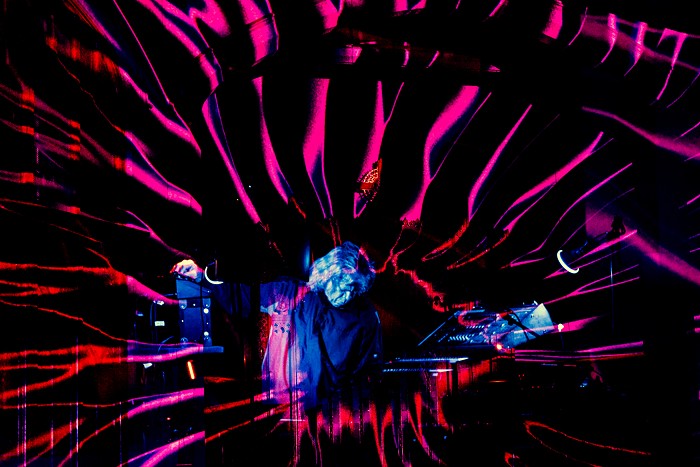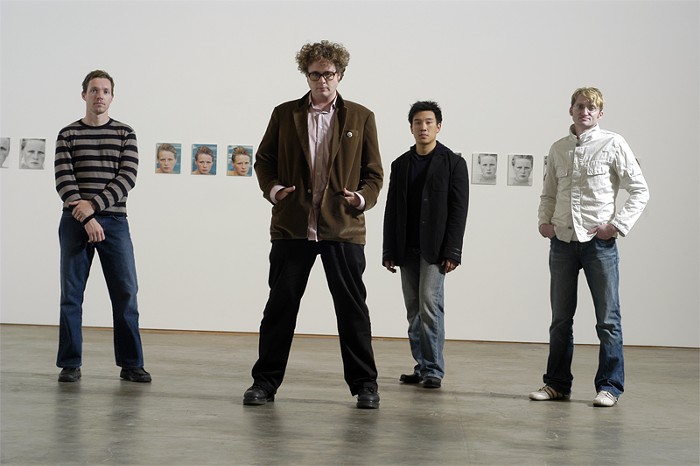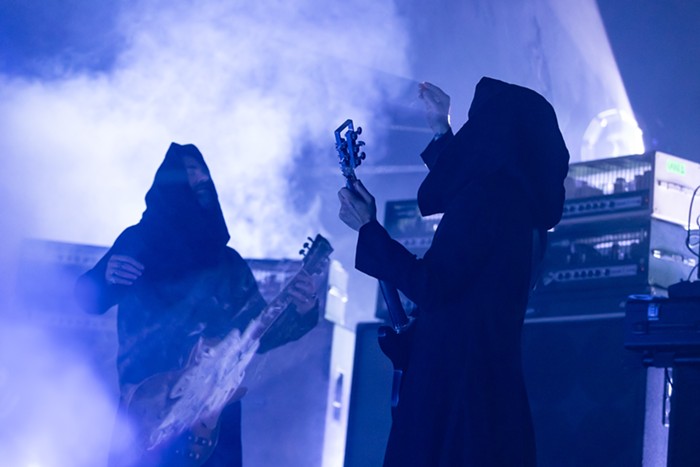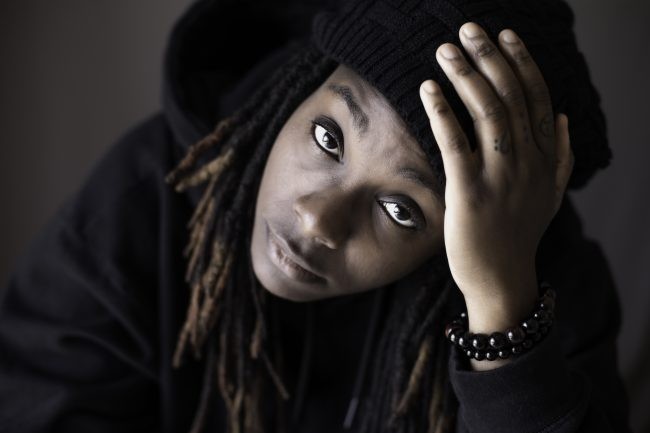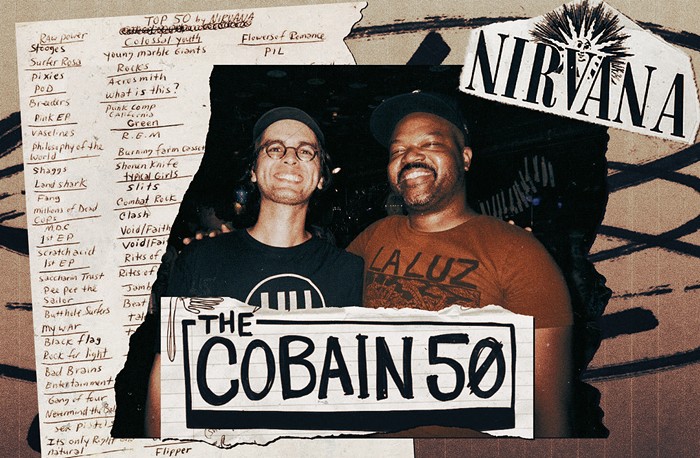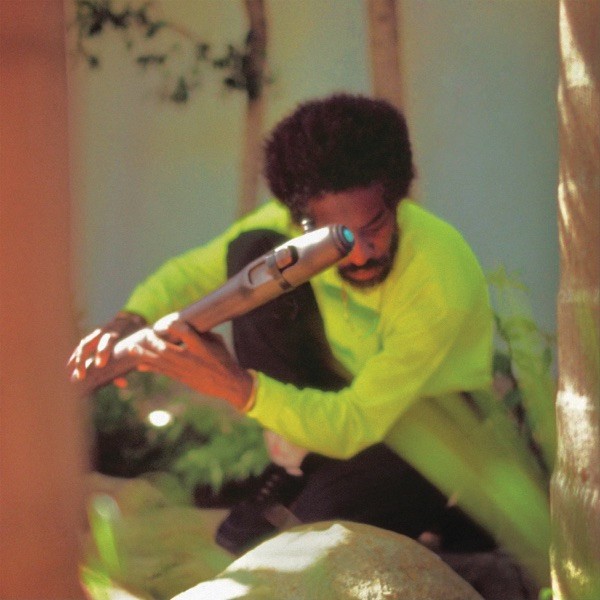w/Chromatics, Hint Hint
Fri Aug 23, Crocodile, 5 pm, $7 (all ages).
No matter how much the forked punk guitars and jumpy rhythms of Erase Errata's debut record, Other Animals (Troubleman), make you squirm, it's not a good idea to suggest that the band is being purposely difficult. "I don't think it's complex," bassist Ellie Erickson says firmly, via phone from the Washington, D.C., crash pad she is sharing with drummer Bianca Sparta and guitarist Sara Jaffe. (Vocalist/trumpeter Jenny Hoysten is out preparing for the band's Ladyfest D.C. appearance later that evening.) She wakes up a snoozing Sparta to comment.
"It's a lot of different things all together that are simple, but when they're together they sound complex," Sparta notes.
A few minutes later, Jaffe finishes off the thought: "I don't know about complex in terms of intricate or technical. We have a lot of changes, and try to do a lot to keep it interesting for ourselves, but I think our songs are so short, I don't feel it's complex."
Like much of what Erase Errata does, complexity is an illusion: It's the public face this Bay Area band presents to mask its underlying operating system. Since their inception in 1999, Erase Errata have used the structure of late-1970s and early-1980s art punk to hide a very deliberate agenda that includes keeping the music interesting and surprising for listeners. The seemingly chaotic motions of Other Animals, from Hoysten's staccato yelps to the blistering Gang of Four guitar licks to Erickson's jarring bass lines, are not just freeform punk chaos. Rather, they are an intentionally created sensation of punk chaos.
Paradoxically, one of the most important structures influencing Erase Errata is that they create songs through spontaneous interaction. The musicians write using what they've often termed "ready, set, go" songwriting, where all members begin playing simultaneously after a count-off. This approach frees them from the linear narrative conventions of traditional songwriting and allows them to channel a frenetic and unstructured energy into the music.
"When we try to sit down and write parts and bring them into practice, it doesn't work," Sparta says. "Normally we just jam for a while and that kind of sound comes out. We just go off of ideas. It's more like themes: Let's write a slow song; let's write a sloppy song. Let's write a song about wallpaper. What does wallpaper sound like?"
While wallpaper undoubtedly provides countless hours of inspiration, Hoysten is primarily a political songwriter, and she infuses her lyrics with personal content that gives them weight and relevance. Tracks like "Other Animals Are #1" and "How to Tell Yourself from Television" tackle the invasion of technology into human lives, something the band has felt in recent years as San Francisco weathered the dot-com revolution. "Delivery" explores themes of childhood and loss, and "Tongue Tied" finds Hoysten using her best Siouxsie Sioux yip to present an empowered version of love.
About Hoysten's writing, Jaffe explains, "It's not like, 'I'm putting on my right shoe first today so I'm making a political statement.' It's like, 'Let me think about how this could happen in a larger context. In order to make [the music] interesting, maybe I could talk about this other person and which shoe they put on and how that relates to what the first person was doing. I'm going to add these details; I'm going to talk about the world around me. I'm not going to just play these three guitar chords, because that's boring.'"
This idea of placing oneself inside a larger framework is critical to Erase Errata, and is perhaps what sets Other Animals above the hordes of other neo-punk records dotting the music landscape like angular daisies. Erase Errata use their influences to create something wholly 21st-century: simple songs with an elaborate message informed by feminism, queer theory, and anti-capitalist and anti-technologist thought.
So is there a not-so-hidden irony in subverting the simplistic punk structure by adding critical thought? Jaffe concludes, "A lot of what's inspiring and interesting to me about that early 1980s stuff is that it was just taking something that was a form and saying, 'Well, let's do something different with it.' That kind of spirit is infusing what's going on here."
